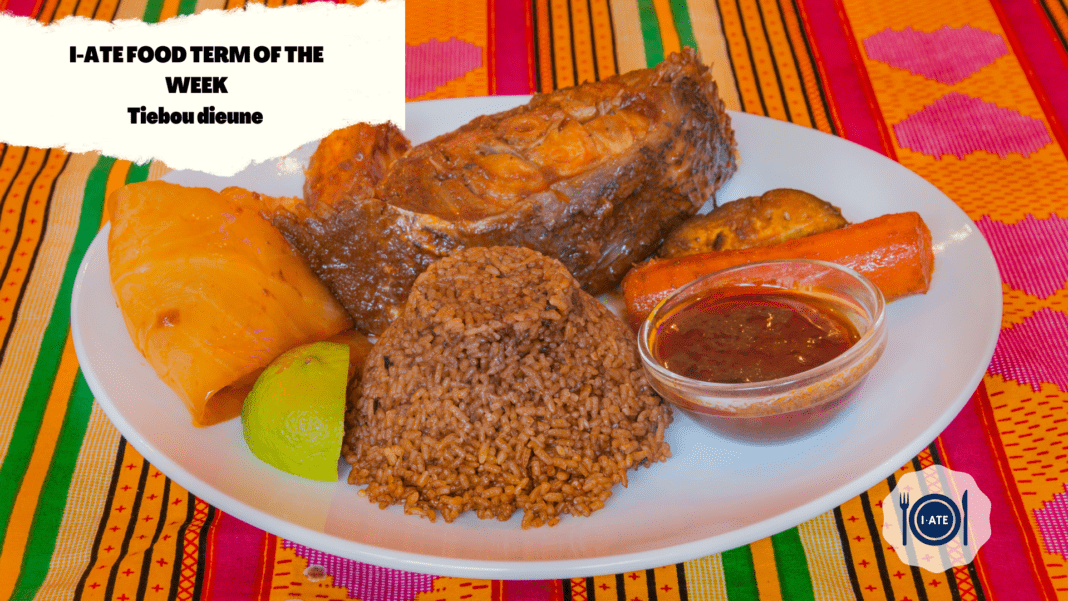Tiebou dieun is one of the dishes that make the pride of Senegal. Recently added to the UNESCO heritage list, it is enjoyed throughout West Africa.
History of Tiebou dieun
The origins of the most emblematic dish of Senegal, Tiebou dieun, go back to the last century in the former kingdom of Walo. It all started in the fishermen’s district of Guet Ndar, Saint-Louis, then capital of French West Africa (AOF). In this part of the city, small boats unloaded the fish caught every day. A cook became known for her fish rice, which eventually bore her name : Penda Mbaye (1904-1984). According to stories gathered by the National Commission for the Rewriting of the General History of Senegal from the elders and descendants of Penda Mbaye, a governor approached her to ask her to cook for his guests.
During the ceremonies, the guests had to be satisfied. Penda Mbaye had the idea of colouring the rice, not with the tomato paste that is so popular today, but with cherry tomatoes, which are fresher. The white rice then becomes red.
Sociological significance
Literally, Tiebou dieun means “rice with fish”. The quality of the fish and the choice of vegetables are not accidental. They are determined by the importance of the event or the degree of affection one has for the guest. Tiebou dieun is linked to specific cultural practices. As was almost customary in many Senegalese families, the bowl remains in the middle and must be held with the left hand, and the rice grains must not fall out while eating. It is also forbidden to sit with one knee raised. This is an affirmation of Senegalese identity. The recipe and preparation techniques are traditionally passed down from mother to daughter, according to Senegalese tradition.

Recipe
Depending on where you are in Senegal, the recipes vary. The dish is generally made with fish steak, broken rice, dried fish, shellfish and seasonal vegetables such as onions, parsley, garlic, chili, tomatoes, carrots, eggplant, white cabbage, cassava, sweet potato, okra, bay leaves.
References:
AfricaNews. 2022. Senegal national dish added to UNESCO heritage list | Africanews. [ONLINE] Available at: https://www.africanews.com/2021/12/16/senegal-national-dish-added-to-unesco-heritage-list/. [Accessed 01 June 2022].
Le Point Afrique. 2022. Sénégal : le thiéboudiène inscrit au patrimoine mondial de l’Unesco ! – Le Point. [ONLINE] Available at: https://www.lepoint.fr/afrique/senegal-le-thieboudiene-inscrit-au-patrimoine-mondial-de-l-unesco-15-12-2021-2457108_3826.php. [Accessed 01 June 2022].
Le ceebu jën, art culinaire du Sénégal – patrimoine immatériel – Secteur de la culture – UNESCO. 2022. Le ceebu jën, art culinaire du Sénégal – patrimoine immatériel – Secteur de la culture – UNESCO. [ONLINE] Available at: https://ich.unesco.org/fr/RL/le-ceebu-jn-art-culinaire-du-sngal-01748. [Accessed 01 June 2022].

Written by Landing Bassene
Landing holds a degree in English Literature and Documentary Information Sciences (library, archives, documentation) from Cheikh Anta Diop University in Dakar. He is currently pursuing a Master’s degree in Learning and Communication in Multilingual and Multicultural Contexts at the University of Luxembourg. He has worked as a copy editor for a daily newspaper in Senegal and speaks French, English and some Italian.

